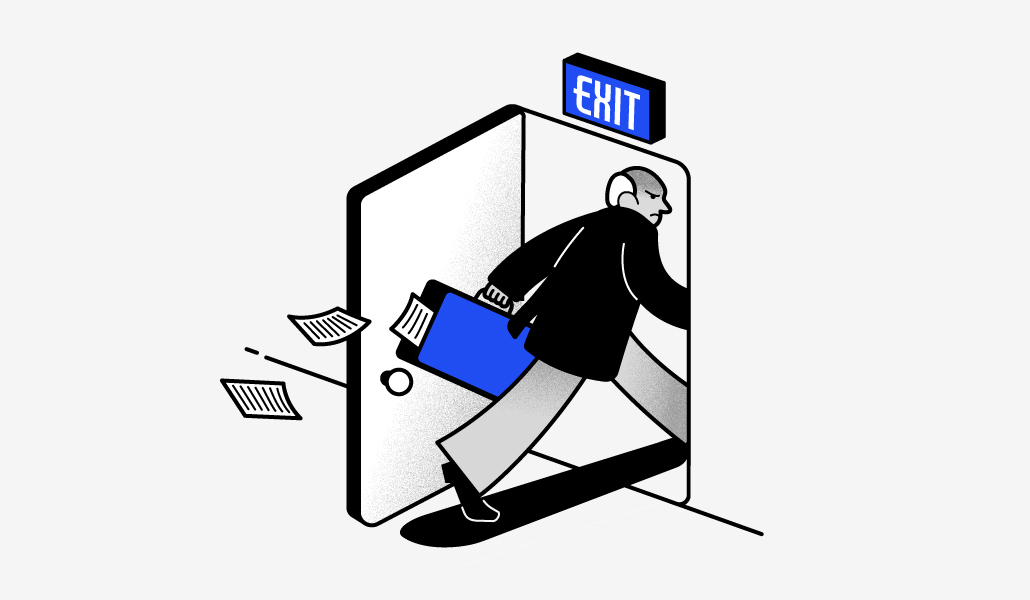WTF is Shybrid?

Remote and hybrid work have become the norm, as companies seek to strike a balance between the health and safety of employees, their desire for flexibility in their jobs and lives, and the requirements of business. And yet some employers still don’t want to let go of the idea of the traditional, five-day workweek in the office — hoping for it, dreaming of it, planning for it.
They are what’s come to be known as the “shybrid” boss.
Where did it come from?
You may have come across the term as the impact of Covid withers and as the serious debate of returning to longtime work norms — aka the office — emerges.
The earliest mention of “shybrid” came from Paul McKinlay, vice president of communications and remote working at the printing company Cimpress, who credited his company with coining the term, in a Bloomberg News article last December. He defined it as: “the failure of companies to accept that they have, in many cases, lost the right to demand in-person attendance at a piece of real estate on any kind of regular basis. It’s about continually pushing back return dates without declaring on a future model and leaving people in limbo.”
For its part, Cimpress transitioned to a permanent remote-first model in August 2020.
What’s driving it?
The shybrid boss is in good company, it would appear — and those of us who’ve gotten used to being the masters of our own work domain could well be preparing to pack up our pencils and fake plants and head back to the cubicle soon.
Molly Johnson-Jones, cofounder and CEO of the flexible work specialists Flexa, pointed to an Ipsos poll for the workplace management firm GoodShape that revealed two-thirds of employers are set to cut back on flex work arrangements post-pandemic.
“These remote-adverse individuals [shybrid bosses] are the ones who’ve likely spent years of their careers in corporate offices, who still wore a shirt to Zoom meetings during lockdown, and who sent the ‘back-to-office plan’ email. The pressure they put on staff to be in offices full-time is real,” she said.
Frederick Pikovsky, co-founder and CEO of Barnfox, a hospitality company that provides spaces for remote work and work retreats in upstate New York and Manhattan, believes shybrid is an element of an outdated mindset, of bosses who simply don’t want to relinquish a sense of control.
“There’s a power play in demanding your employees show up to the office every single day,” he said. “Other employers may feel hybrid/remote work policies affect productivity. However, there’s now been countless and growing studies that prove otherwise. Obviously, when it comes to certain activities, innovation and creativity, you want teams in a room working together, but that’s what a hybrid model is for.”
The case for shybrid (or, the return to the office)
Despite remote and hybrid becoming so popular, and as numerous studies have shown they have their benefits, an argument can be made for those bosses who are reluctant to give up office life.
While she is firmly in the pro-hybrid column for her own company, Lee Rubin, CEO of Confetti, an online platform used for virtual team building, corporate events and experiences, understands why some bosses are pressing for a return to the traditional work set-up and the upside of face-to-face interactions.
Rubin admitted misjudging a venture capitalist who was interested in investing in her firm as “a little weird and quirky,” after several phone calls. But after meeting him in person she changed her tune. “There was something about seeing all his body movements and attire, the piercing look in each other’s eyes, that made me see him a bit more as the human that we all are,” she said.
Likewise, David Farkas, founder and CEO of The Upper Ranks, a link-building platform, believes hybrid work arrangements save resources, promote productivity and encourage employee well-being. But again, that’s not to say there’s no upside to returning to the office. “It will create a focused environment in which an employee can work, increase the work-life balance, and employees get to communicate and share ideas with others,” he added.
The case against shybrid
Many bosses have realized that remote and hybrid works — and will keep working beyond Covid.
“What people need to realize is that some companies can succeed fully virtual, even before the pandemic,” Rubin said. “Being remote is a skill. You need to know how to operate certain tools, you need to know how to manage remotely, you know how to build a culture remotely. If your culture is healthy, a remote employee probably gets more work done than one that goes into the office. All the conversations that happen in the background, all those people that interrupt your workflow in an office setting, the commuting… takes away from that efficiency that oftentimes isn’t necessary face to face.”
Pikovsky thinks employers should be more open to embracing hybrid models chiefly to attract and retain talent. In fact, research suggests that flexibility makes employees less likely to leave a job.
“If your competitor provides a remote/hybrid work policy, you’re at risk of losing your team,” he added, noting that job postings increasingly include “remote/hybrid” as a prominent feature.
3 Questions with Molly Johnson-Jones, co-founder and CEO of the flexible work specialists Flexa
What tips would you suggest that can help move employers past their shybrid phase?
Prove that working from home works. This shouldn’t be difficult. Months upon months of lockdowns put remote working to the ultimate test. Arrange a meeting with your shybrid boss and come prepared to talk about deadlines you met, projects you’re proud of, and positive feedback you’ve had over the past couple of years.
We all have our preferred ways of working, and personal reasons for said preference — shybrid bosses included. But those who thrive upon the hustle and bustle of office life might not consider that other personalities prefer to work in solitude for at least a couple of days a week. Equally, managers won’t always know when staff have caring responsibilities that make working from home easier sometimes, or invisible health needs that mean full-time office work is out of the question.
So take the time to explain why hybrid work suits you as an individual. You can always reach a compromise.
What might a good compromise look like?
Hybrid work is flexible by definition. The exact days and number of hours you spend in the office may change week on week. Equally, offices don’t need to be fixed locations. Companies may use a network of workspaces to give distributed teams — or even individuals who want a change of scene and colleagues — a choice of where they work.
And remember, flexibility isn’t only about the place of work. A later start and finish time might make the office commute more bearable, whilst dog-friendly offices may make days spent away from home more manageable for furry friends. So think about what your ideal mix of flexible working benefits would be. Then, approach your boss to negotiate a plan that works for you both, and be prepared to trade a home-heavy hybrid model for flexitime for example.
And if you don’t want to compromise?
There’s no point settling for a working arrangement that will leave you unhappy, and you should never be made to feel uncomfortable for raising the subject of flexibility. Truly flexible companies will accommodate different ways of working as standard — without you having to ask. Plus, record levels of vacancies mean that there’s no shortage of employers ready to fulfill all your flexible working wants and needs. From unlimited annual leave and work-from-anywhere schemes to dog-friendly offices and “pawternity” leave, flexibility has evolved well beyond working from home two days a week.
By the numbers
- In a survey of 23,000 respondents across 12 countries, 45% of Americans said when they’re working from home they sleep better than when they’re working in an office. In Germany 66% said the same, China 61% and Australia 60%.
[Source of data: ResMed study.] - 41% of 255 HR leaders questioned, believe meeting culture — defined by aspects like their frequency, length, and focus — is a top challenge in the workplace, and this has worsened significantly as the pandemic progressed.
[Source of data: Time’s HR Identity Crisis study.] - 70,000+ of the 530,000+ jobs being advertised on LinkedIn as available in the U.S., are remote roles.
[Source of data: LinkedIn data.]
What else we’ve covered
- WTF is Hotelification? Companies are being advised to collaborate with hospitality designers and hiring managers to revamp the workplace. Here’s why.
- After more than two dreary years, insights are emerging that aim to shed light on what we can learn from the upheaval and what lessons can help shape the traditional office experience and work-life balance, for the better.
- Disturbing trends in online harassment point to the vulnerability of women, a gap in what men and women perceive to be harassment, and the presence of bystander syndrome.
- From investment manager to wealth coach, translator to influencer and trader to Marie Kondo Consultant, the pandemic has nudged women down unforeseen, yet highly satisfying, career paths.
- Gen Z — being on track to become the best-educated generation yet and the hottest job market in recent memory — have unique employee traits from those who came before them.
- Adjusting work schedules, offering additional time off and nurturing a wider culture of global awareness and compassion is essential for the employees that are welcoming refugees from Ukraine into their homes.
- With paternity leave uptake dangerously low, a new generation of gay dads are rewriting the gendered narrative around parental leave.
- Business diversity analysts contend employers should recognize that talent with neurological variations are well-equipped to look at the world differently.
- Harvard Business Review’s The “The Emerging Degree Reset” report, which analyzed more than 51 million jobs posted between 2017 and 2020, showed a sharp decrease in the amount of employers requesting college diplomas when hiring.
- When it comes to data upskilling and training, there is a glaring disconnect between what employers are demanding and what they deliver.
- Onsite is the new offsite: While employees have proven they can work from anywhere, the office still plays a vital role in bonding and collaboration. This is especially true as safety concerns of Covid-19 subside.


